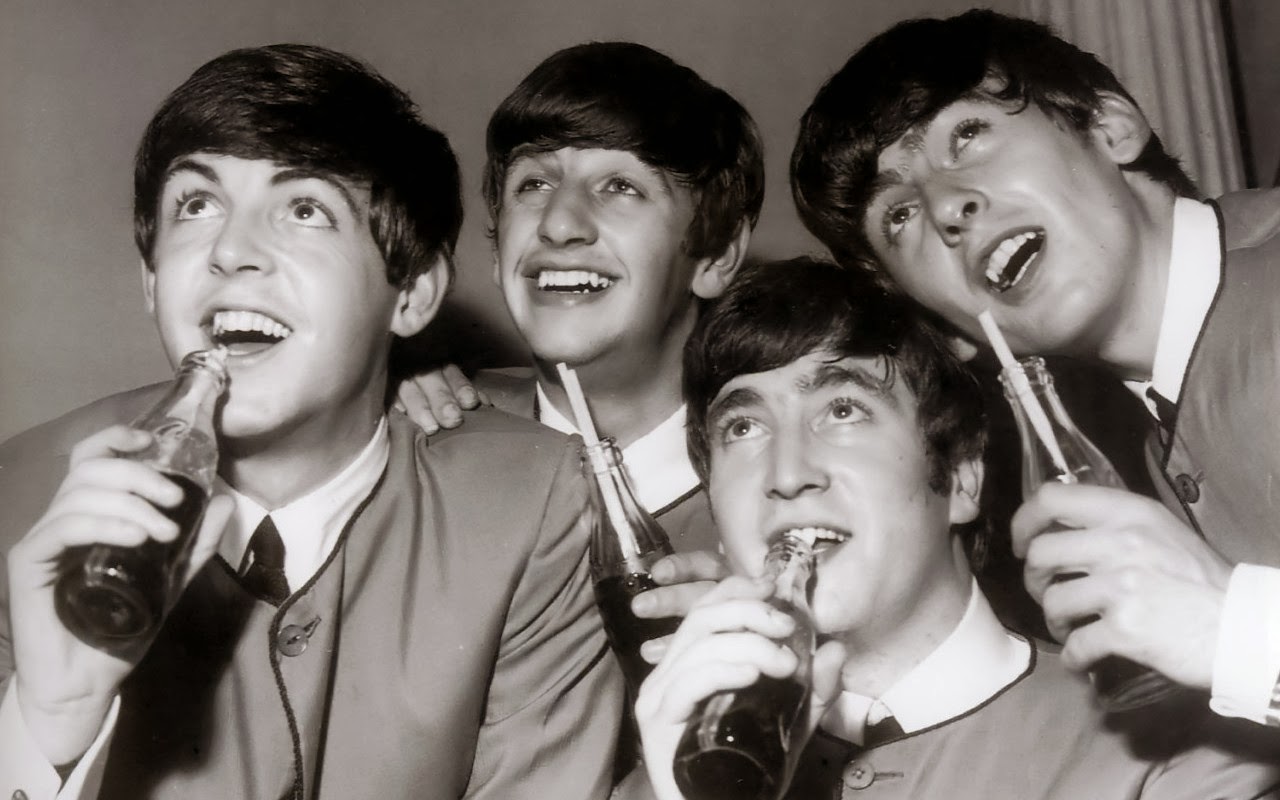I don't know if I've ever mentioned this on here before, but when I was doing my undergraduate studies at the University of North Carolina at Chapel Hill, I was a history major - specifically, American history (for those curious, I did minor in cinema studies, as well as religious studies). Of course, if the university had offered a cinema major, I definitely would have done that as well. But I've always been fascinated by history: there's so much that can be gleaned from where we've come from that has nothing to do with memorizing dates. History always repeats itself, and the problems the world faces today are rooted in where we've come from; despite what a certain North Carolina governor (and other members of his party) might think, there is enormous value in studying history - and any fine arts/humanities, by the way.
Okay, I'll get off the soapbox now. The reason I bring this up is that today, February 7, marks the 50th and 100th anniversary of two landmark events in pop culture: the arrival of the Beatles to the United States and the very first appearance of Charlie Chaplin's "Little Tramp" character, respectively.
More after the jump.
First, let's talk about Chaplin; this is predominantly a film blog, after all. 1914 marked the first year that Chaplin started working in Hollywood, and the half-reel short "Kid Auto Races at Venice" - clocking in at a full 11 minutes - was the first film to feature his iconic "Little Tramp" character. In the film, the Tramp isn't the lovable buffoon that would appear in Chaplin's most famous films, but is rather an irascible jerk who keeps interrupting the filming of a go-kart race. The film is largely considered to be the first in which the film crew is shown, and could be considered a very, very early predecessor to the "mockumentary" genre. It was not, however, the first film to be made featuring the Little Tramp. That would actually be "Mabel's Strange Predicament," which was filmed first but premiered a mere two days after "Kid Auto Races at Venice." Supposedly, Chaplin created the character for "Mabel's" by throwing together a costume that was too baggy for him, then improvising his trademark waddle. In "Mabel's," he's credited as "Drunk," making "Kid Auto" the first time he's credited as the Tramp. It would become Chaplin's most iconic character, and the star of some of his most famous films, including Modern Times (1936), The Circus (1928), and City Lights (1931). The first half of "Kid Auto Races at Venice" can be viewed here, while "Mabel's Strange Predicament" is available here.
When the Beatles first arrived in the United States, they were already huge in Britain and several other European nations. America, however, was different. The band's first two singles - "Please Please Me" and "Love Me Do" - had been released by a small label, and neither had made much of an impact on the Billboard charts. There were screaming fans waiting to great them at the newly-renamed John F. Kennedy airport in New York, but for the most part the music press was ready to write them off as a teen fad with no substance, easily forgotten within a few years. However, when the band played on The Ed Sullivan Show two nights later, a whopping estimated 73 million viewers tuned in, and soon the band began a record-breaking run through the rest of the decade that cemented their status as one of the biggest and most influential rock bands in music history. If you're interested, Rolling Stone has a more detailed account here.
Okay, I'll get off the soapbox now. The reason I bring this up is that today, February 7, marks the 50th and 100th anniversary of two landmark events in pop culture: the arrival of the Beatles to the United States and the very first appearance of Charlie Chaplin's "Little Tramp" character, respectively.
More after the jump.
When the Beatles first arrived in the United States, they were already huge in Britain and several other European nations. America, however, was different. The band's first two singles - "Please Please Me" and "Love Me Do" - had been released by a small label, and neither had made much of an impact on the Billboard charts. There were screaming fans waiting to great them at the newly-renamed John F. Kennedy airport in New York, but for the most part the music press was ready to write them off as a teen fad with no substance, easily forgotten within a few years. However, when the band played on The Ed Sullivan Show two nights later, a whopping estimated 73 million viewers tuned in, and soon the band began a record-breaking run through the rest of the decade that cemented their status as one of the biggest and most influential rock bands in music history. If you're interested, Rolling Stone has a more detailed account here.




Comments